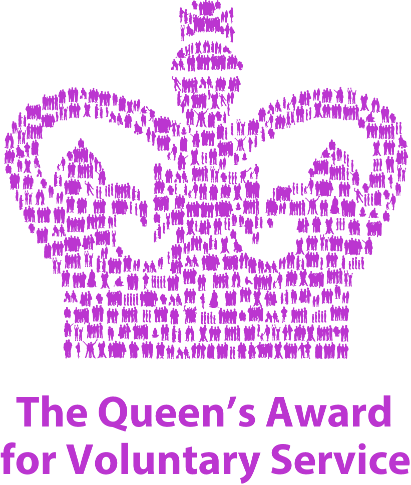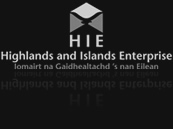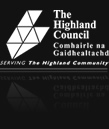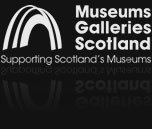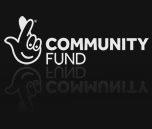Blog
The Clan
The Highland Clan System and our way of life eventually gave way to Feudal tenure and Oighhread (pronounced owruck), which was introduced to England during the Norman Conquest in 1066. This system was later brought to the lowlands in 1124-1153 under David I and his wife St. Margaret.
The Clan system operated through tanist succession, where the heads of cadet branches (e.g., 10 in Keppoch) voted to determine the next leader. Land ownership was based on the concept of Duthaich, which involved community ownership with mercs (silver pennies or produce) paid to the Chief as rent.
The principal cadets of the Keppoch clan were branches or sub-families that held significant status and influence within the broader Keppoch clan structure. In the context of Scottish clans, cadets were the descendants of the main clan's chiefs who established their own lineages. They were often granted specific territories or lands to govern and were expected to provide loyalty and support to the main clan chief.
Major Donald MacDonell of Tirnadris (one of 10 principal cadets of Keppoch) The author is Cranachan and his first cousin is Inverroy.
Keppoch is split into two main houses (there are more) Sliochd na Ceapaich and Sliochd an Tighe.
These are 10 principal cadets and there are cadets within each of these to make things way more complicated.
Killiechonate, Inverroy & Murlaggan, Achnacoichean gaskmore 2nd family of gaskmore
Bohuntine Tulloch Cranachan Inch 2nd family of Inch Fersit Murlaggan Clinaig Tirnadris
(this seniority is via the High council of Clan Donald)
The primary determining factor for the transition was the significant difference in population sizes between the Highlands and Lowlands. Additionally, the undulating farmland extending from Aberdeen down to the border reivers outcompeted most of the Highland farms, further influencing the shift in systems.
.jpg)
“The MacDonnells of Keppoch and Gargavach” by the late Josephine M .MacDonell of Keppoch.
Major Donald Macdonell was the son of Ranald Mor, Tirnadris, brother of Coll of Keppoch (Colla Nam Bo 15th Chief). Thus he was first cousin to Alexander, the Chief Killed at Culloden* (* a new letter found via Gordon MacGregor suspect that Keppoch survives his two wounds at Cuil Lodair)
Major Donald was married to a daughter of MacDonald of Killiechonate as second wife.
His first wife was Miss MacKenzie of Cromarty.
By the first wife he had issue-
- Ranald an only son and three daughters-
- Isabella died unmarried
- Mary married to Mr Chichester of Arlington.
- Catherine married Thomas MacDonald of Gallovie.
By second marriage to Killechonate.
- Sarah married to her cousin Major Alexander MacDonell of Keppoch.
- Juliet died unmarried.
.jpg)
The Skirmish
The first clash of the uprising in Scotland occurred at Highbridge on the river Spean in Lochaber. This bridge, constructed by General Wade In 1730 was part of a network of roads in the Highlands designed to aid military movements. In response to Prince Charles's arrival in Moidart, authorities took measures to prevent a Jacobite rising. Lieutenant-General Sir John Cope issued orders on August 10th for two companies of the 2nd Battalion, St. Clair’s Regiment of Foot (Royal Scots), totaling about 80 or 90 men, to march from KillChumein to Fort William and reinforce the garrison there.
As the Royal Scots approached Highbridge on August 16th, they encountered a small party of armed men led by Major Donald MacDonald of Tirindris. These Keppoch men, appearing more numerous than they were, used the High Bridge Inn and nearby woods as cover to deceive Captain John Scott, the Royal Scots' leader. When a sergeant was sent forward to negotiate, he was taken prisoner to prevent him from revealing the small size of the Keppoch force, which was 13 including a piper.
.jpg)
Donald MacDonald of Tirnadris held off the Scottish royal regiment until reinforcements arrived under the leadership of the Keppoch Chief Alasdair MacColla and as he approached, Captain Scott decided to retreat along the same route they came. The Keppoch men fired upon them, and the Royal Scots returned fire before diverting their path along the edge of Loch Lochy. However, they soon encountered another group of Jacobites on the hill to the west of Loch Oich, intent on intercepting them. With no other option available, Captain Scott formed his men into a defensive square.
Alasdair MacColla of Keppoch and his additional forces joined Tirnandris in pursuit of the Royal Scots. Surrounded by the Keppoch and Glengarry men, and after suffering about five casualties and over a dozen wounded, including Captain Scott himself, the Royal Scots had no choice but to surrender. Alexander of Keppoch offered them quarter, and Captain Scott accepted the terms.
Following their surrender, the prisoners were taken in the custody of Donald Cameron of Lochiel to Achnacarry and later to Glenfinnan. On August 21st, Sir John Cope reported the incident to the Marquis of Tweeddale, Secretary of State for Scotland, stating that the additional companies of St. Clair’s Regiment were attacked at Highbridge on the 15th of August as they attempted to retreat. The enemy on the hillsides fired upon them, forcing their surrender and resulting in one officer being wounded and some men killed and wounded.
.jpg)
“I have heard Reports for some time, of Men being taken going to
Fort William, which are now confirmed. The two additional
Companies of St. Clair’s were on the 15th instantly attacked at
Highbridge, and, as I am told, as they were endeavouring to
retreat, the Enemy on the Side of the Hills fired on them, and
obliged them to surrender; one Officer was wounded, some Men
killed and wounded.”
The Aftermath
The part Donald MacDonald of Tirnadris took in the rising of 1745 has been already related in the Chiefs history up to the time he was taken at Carlisle and how he would not though he could escape on the way there so as not to abandon his kinsmen and friends who were in a similar plight. When Major MacDonell had taken Major MacDonell Captain Scott prisoner at High Bridge, he sent to the Garrison at Fort William for a surgeon to attend to his wounds which they refused to do, so the Major took him on his horse to a place of safety till he was conveyed to the garrison on his parole of honour not to fight against the jacobite cause. He kept his word much to Cumberlands chagrin and went soon after to London and in later life he owed his life to Major MacDonell whose daughter (Mrs Chichester) he often met. But though he made an immense fortune, principally by gambling, he never left as much as s trinket to the family of the Major in their altered fortunes.
His confinement was strict and severe at Carlisle though his wife and friends tried all they could to alleviate his sufferings and his terrible grief for his wife and young family. But he never hoped for any mercy from the Government knowing the wanton cruelties that he had been perpetrated on other Highlanders. At his trial of conduct he was respectful and dignified. When an appeal was seen to be useless, he and all those who shared the same unhappy fate submitted with a degree of firmness and composure which affected all present.
The letter to his unhappy wife at Edinburgh published in Dr MacDonalds Memoirs show how all his anxiety was for his family without a thought of his own fate.
The SPEECH of DONALD MACDONELL of Tiendrish, of the Family of Keppoch.1 fol. 62.
The Lyon in the Mourning by Robert Forbes A.M.
As I am now to suffer a publick, cruel, barbarous and (in I746 the eyes of the world) an ignominious and shameful death, I I8 Oct. think myself obliged to acknowledge to the world that it was principle and a thorough conviction of its being my duty to God, my injured king and oppressed country, which engaged me to take up arms under the standard and magnanimous conduct of his royal highness, Charles, Prince of Wales, etc. It was always my strongest inclination as to worldly concerns to have our ancient and only rightful royal family restored, and even (if God would) to lose my life chearfully in promot ing the same. I solemnly declare I had no by-views in draw ing my sword in that just and honourable cause, but the resto ration of my king and prince to the throne, the recovery of fol 63. our liberties to this unhappy island which has been so long loaded with usurpation, corruption, treachery and bribery; being sensible that nothing but the king's restoration could make our country flourish, all ranks and degrees of men happy, and free both Church and State from the many evil conse- I8 Oct. quences of Revolution principles. I must here let the world know that the whole evidences, to the number of six or seven, brought against me at my trial by the Elector's council were perjured. What they aim'd to prove was only relative to the battle of Gladesmuir, and in this they swore the greatest untruths, and did not declare one word of truth. I earnestly pray for their repentance that God may forgive them, as I sincerely do, not only them but all other my enemies in general. I own indeed I was engaged in said battle and saw a great slaughter on all hands where I was posted. But sure I am the fol. 64. evidences that appeared against me did not see one step of my behaviour that day. I thank God ever since I drew my sword in that just and honourable cause, I acted not only in obedience to the merciful commands of my glorious prince but in compliance with my own natural disposition, with charity and humanity to my enemies, the Elector's troops, when prisoners and in my power, without receding at the same time from that duty and faith fulness I owed to my prince and the common cause. My being taken prisoner at the battle of Falkirk 1 was more owing to my own folly or rashness than the bravery or valour of the enemy, whom I saw before I was taken entirely routed and chased off from the field of battle. I fell into their hands fol. 65. by supposing them at a distance, and in the twilight, to be Lord John Drummond's regiment and French picquets; but too late, to my sad experience, found out my fatal mistake. And here I refer to my enemies to declare my behaviour on that occasion. Now though I am presently to die a cruel death, yet when I consider the justice of the cause for which I suffer, it puts a stop to every murmuring reflection; and I thank Almighty God I resign my life to Him, the giver, with chearfulness and submission to his Divine and all-wise providence. I here declare I die an unworthy member of the Roman Catholick Church, in the communion of which I have lived however much her tenets be spoken against and misrepresented fol. 66. by many; and in that I now expect salvation through the sufferings and merits and mediation of my only Lord and Saviour Jesus Christ. But I hereby declare upon the word of a dying man that it was with no view to establish or force that religion upon this nation that made me join my Prince's standard, but purely owing to that duty and allegiance which was due to our only rightful, lawful and natural sovereign, had even he or his family been heathen, Mahometan, or Quaker. I am hopeful and am persuaded that my valorous prince, by the blessing of God, will at last be successful, and when in his power, will, under God, take care of my poor wife and family. And as I have no worldly fortune to leave my dear son, I re commend him to the blessing and protection of Almighty God, as the best legacy I can give him, and earnestly require his fol. 67. obedience to my last and dying command, which is to draw his sword in his King's, his Prince's and his country's service, as often as occasion offers and his lawful sovereign requires. As I have the honour to die a Major in our King's service, I am hopeful, if my dear child deserves it, he will succeed me at least in the same office, and serve his Prince with the same honour, integrity and faithfulness I have all along endeavoured, to which his royal highness is no stranger. I conclude with my blessing to my dearest wife and all my relations and friends, and humbly beg of my God to restore the King, to grant success to the Prince's arms, to forgive my enemies and receive my soul. Come, Lord Jesus, come quickly! Into thy hands I resign my spirit!
DONALD MACDONELL. fol. 68. At Carlisle, upon Saturday, October 18th, the festival of St. Luke, the Evangelist, 1746.
"In the Highlands and beyond, the tale is widely known of the courageous encounter involving Major Donald Macdonell of Tirnadris*. Leading a mere eleven men and a piper, he ingeniously deceived two government troops' companies into thinking they were surrounded.
As a result, the troops hastily fled, immortalizing the 1745 Battle of Highbridge as a legendary moment in Scottish history. In retaliation, Government forces compelled the Macdonell family to escape, and eventually, Donald met his fate with the hangman's noose in Carlisle.
However, a lesser-known aspect of this saga revolves around Donald's son, Ranald, who was approximately seven years old at the time. In a letter penned just before his execution, Donald expressed his desire for young Ranald to join the Jacobite battle. Nevertheless, Ranald chose a different path, setting his sights on becoming a priest and traveling to France to attend a Roman Catholic Seminary in Douai.
Despite facing objections from his family, particularly his sister Isabella, Ranald persisted in his studies at Douai, but fate intervened, and he passed away before reaching the age of ordination.
The harrowing account of how Ranald and his family fled Spean Bridge, taking refuge in the countryside while evading Government troops, later inspired the creation of a novel titled "The Story of Ranald," authored by the children's book writer Griselda Gifford in 1968. (A blog for another day). Griselda Gifford asserts that her book draws from an account written by Ranald himself, called "A Family Memoir of the Macdonalds of Keppoch," which was published in 1885."
*Note: I used "Tirnadris" "Tirindrish," due to differing scribes, Gaidhlig and English.
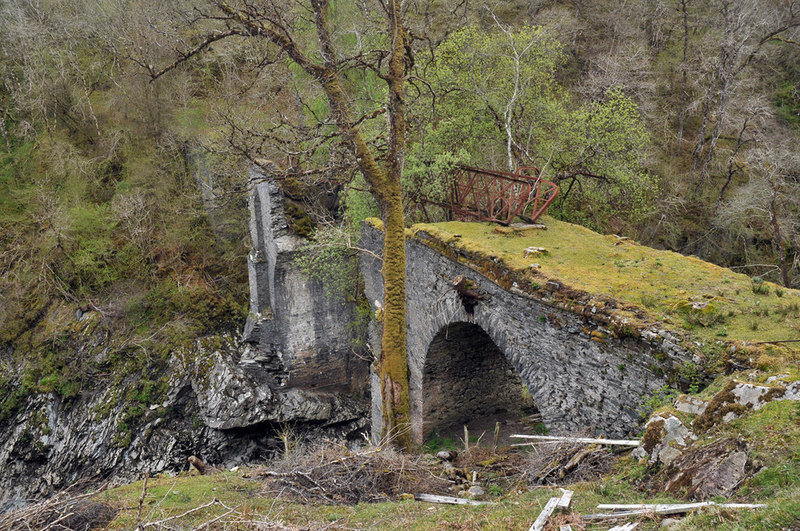
Caomhin Mac Fhionghuin
Images:
1) Alexander F MacDonald Keppoch
2) An image of the High Bridge in the early 20th century before the centre collapsed
3) Shots fired at High Bridge during the Skirmish (c) Paul MacDonald
4) Image depicting the Raising of the Standard at Glenfinnan on 19th August, three days after the Skirmish at High Bridge
5) High Bridge in the 21st century





